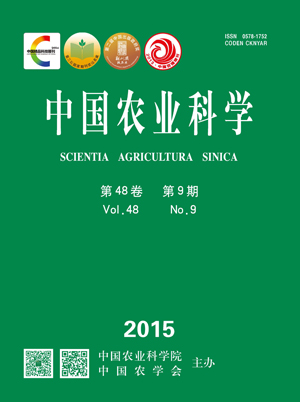-
Determination of Phenolic Acids in Rice by Ultra-High Performance Liquid Chromatography
- ZHANG Na, WANG Guo-xiang, Abacar Jose Daniel, LIU Zheng-hui, DING Cheng-qiang,TANG She, LI Gang-hua, WANG Shao-hua, DING Yan-feng
-
Scientia Agricultura Sinica. 2015, 48(9):
1718-1726.
doi:10.3864/j.issn.0578-1752.2015.09.05
-
 Abstract
(
611 )
Abstract
(
611 )
 HTML
(
4 )
HTML
(
4 )
 PDF (1074KB)
(
806
)
PDF (1074KB)
(
806
)
 Save
Save
-
References |
Related Articles |
Metrics
【Objective】 Phenolic acids in rice grain are the main source for natural antioxidants. This study aims to develop an ultra-high performance liquid chromatography method for the determination of phenolic acids in brown rice and milled rice, and analyze the tissue distribution of phenolic acids in rice grain. 【Method】Standard compounds of the target phenolic acids, including gallic acid, protocatechuic acid, gentisic acid, 2,5-dihydroxybenzoic acid, 4-hydroxybenzoic acid, chlorogenic acid, vanillic acid, caffeic acid, syringic acid, ρ-coumaric acid, ferulic acid, sinapic acid, isoferulic acid, 2-hydroxycinnamic acid, and trans-cinnamic acid, were purchased from Sigma-Aldrich. The liquid-chromatographic separation was performed on Agilent ZORBAX Eclipse Plus C18 (2.1 mm×50 mm, 1.8 μm-Micron) column kept at 30℃, using acetonitrile/acetic acid/water mixture as the mobile phase with a flow rate of 0.5 mL·min-1 through gradient elution: 0-1 min, 8%-10%B; 1-2.5 min, 10%-13%B; 2.5-5.5 min, 13%B; 5.5-6 min, 13%-21%B; 6-6.5 min, 21%-27%B; 6.5-7.5 min, 27%-50%B; 7.5-9 min, 50%-100%B; 9-12 min, 100%B; 12-12.5 min, 100%-8%B. And the detection wavelength was set at 280 nm and 325 nm. 【Result】 Results showed that a good separation of 14 phenolic acids was achieved within 8 min. Eleven phenolic acids were detected in brown and milled rice by mass spectrometry including gallic acid, gentisic acid, 4-hydroxybenzoic acid, vanillic acid, syringic acid, ρ-coumaric acid, ferulic acid, sinapic acid, isoferulic acid, trans-cinnamic acid. With eight of them can be used for quantitative analysis, including 4-hydroxybenzoic acid, vanillic acid, syringic acid, ρ-coumaric acid, ferulic acid, sinapic acid, isoferulic acid, trans-cinnamic acid. The proposed method exhibited a linear range of 5-220 μg·mL-1(R2=0.9994-0.9999), with limits of quantification ranging from 0.002 to 0.03 μg·mL-1, recovery rates from 84.11% to 114.43%. A significant difference existed in the distribution of 4-hydroxybenzoic acid, vanillic acid, syringic acid, ρ-coumaric acid, ferulic acid, sinapic acid, isoferulic acid, trans-cinnamic acid between brown (B) and milled rice (M). With 4-hydroxybenzoic acid, vanillic acid, syringic acid, ρ-coumaric acid, ferulic acid, sinapic acid, trans-cinnamic acid mainly concentrated in the outer endosperm, and the ratio of M to B was 4.52%-16.72%. By contrast, a considerable part of isoferulic acid accumulated in the endosperm, having a M/B value of 45.86%. 【Conclusion】 It was proved that the proposed method is simple, rapid, accurate, reliability, and should be used for the determination of phenolic acids in rice grain as well as other cereal grains.









